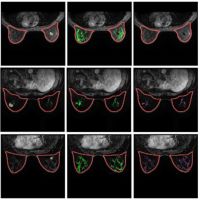A recent study suggests that the more time it takes for breast density to decrease, the higher the chance a woman could develop breast cancer.
In the study published in JAMA Oncology, the team used a mathematical model to monitor changes in breast density across a 10-year period in almost 1,000 women. The study revealed the association between the rate of breast density that changes over time with the risk of cancer being diagnosed in that breast.
The researchers, from Washington University School of Medicine in St. Louis and Brigham and Women’s Hospital in Boston, analysed health data from 947 women in the region who completed routine mammograms and who were free from cancer when they joined. Among the participants there were 289 cases of breast cancer diagnosed. Each woman had received regular mammograms, so the team collected and analysed a total of 8,710 single-breast images, representing an average of four time points across 10-years for each woman.
It was discovered that women who later developed breast cancer had higher breast density compared with women who remained breast cancer-free.
It was also revealed that whether they later developed breast cancer, the rate of breast density declined over time. However, the decline was significantly slower among breasts in women who were later diagnosed with breast cancer.
The team noted that incorporating longitudinal changes in breast density may be used to more accurately assess risk of breast cancer and guide more individualised screening and prevention approaches.
As breast density serves as a risk factor for breast cancer, considering a woman’s past history of density, as well as her current density estimate will provide a more complete understanding of her risk level.
Additionally, the density signal is strongest in the breast that goes on to develop cancer, therefore is a higher chance of determining which breast is more likely to be affected.
As the team conclude, “Many women already get regular mammograms, so the data on density in each breast is already being collected. We just need to use the data more effectively”.
Source: Washington University School of Medicine in St.Louis
Image Credit: iStock



























